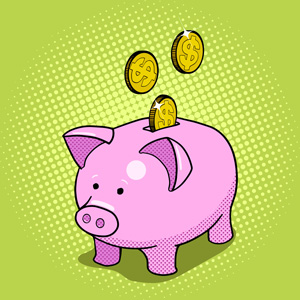 High gas prices and high taxes. That may be the most despised “two-fer” ever. So, the thinking goes, let’s do something about both with one simple action: Enact “gas tax relief.” Whether that’s a good or bad idea, more states are doing just that as gasoline prices continue to hover above $4 per gallon.
High gas prices and high taxes. That may be the most despised “two-fer” ever. So, the thinking goes, let’s do something about both with one simple action: Enact “gas tax relief.” Whether that’s a good or bad idea, more states are doing just that as gasoline prices continue to hover above $4 per gallon.
Taxes are a significant contributor to gas prices. The national average for gas taxes and fees is about 57 cents per gallon, and diesel fuel taxes are even higher, averaging 64.6 cents per gallon.
Convenience stores, which sell an estimated 80% of the gasoline sold in the country, pay or collect a hefty amount of taxes. In 2021, the industry paid or collected $159 billion in taxes, or 23% of all sales dollars, according to newly released NACS State of the Industry data. On a per-store basis, convenience stores averaged $1.1 million in taxes, which includes property taxes, payroll taxes, sales taxes and taxes that are assessed on a variety of products they sell, including gas.
The goal of gas tax relief is to reduce costs for consumers, an intended result that convenience stores naturally support. When customers spend less money on gas, they are more likely to spend more money elsewhere, including inside the store.
Meanwhile, the day that gas tax relief laws take effect, news crews eagerly visit convenience stores to compare prices. We know because we get calls from reporters. Did Maryland’s prices drop 36 cents? Did Georgia’s prices drop 29 cents? And did prices in Connecticut go down by 25 cents when the new state gas taxes took effect, to name three examples? If not, something’s wrong, right? Unfortunately, it’s not that simple.
Adding more gasoline to the fire, there are now proposals to mandate stickers at the pump that communicate messages about gas tax relief. You know who reads stickers at the pump? People whose jobs are to enforce their placement. And do you know who doesn’t read stickers at the pump? I’ll leave that one for you to decide.
Here are three significant complications that relate to how immediately tax relief translates to your next fill up:
-
Oil prices and wholesale gas taxes are fluctuating. It is not uncommon to see $10 swings in oil prices and 25-cent price swings on wholesale gas in any given day. There can be a significant difference in costs and prices on any given day when there is wild volatility.
Retailers try to set their prices based on replacement costs, which means they try to adjust prices based on their next shipment. However, not all retailers receive deliveries on the same day or incur the same change in wholesale prices, so retailers must balance their effort to cover replacement costs while maintaining a competitive price for their customers. This can result in temporarily selling fuel for a loss—which, by the way, could be illegal in several states depending upon the circumstances.
-
The market is transitioning to summer-blend fuels. During this time, the cost and complexity to reformulate more environmentally friendly fuels put pressure on prices between February and mid-May. On average, prices historically have increased 50 cents during this transition. The transition is not complete, and that could continue to affect prices.
-
Retailers have inventory considerations when gas tax relief policies are enacted. This can be a big problem for retailers because they have already paid taxes on the fuel that is in their underground storage tanks. A typical storage tank can hold 10,000 gallons, and some are much larger. It can take a few days to work through this inventory. Do you sell the fuel at the reduced tax price even though you paid taxes on that fuel? Or do you wait until your next shipment, which could delay the effectiveness of a gas tax relief?
Retailers also don’t want to “drain their tanks” to minimize the fuel they paid taxes on. We are still feeling the effects of the trucker shortage, and the system isn’t equipped for a mass rush of retailers purchasing wholesale fuel on the same day.
Other states are discussing gas tax relief to address a very real problem. And in some cases, other solutions are proposed, including sending tax relief checks to every driver, which could eliminate some of the challenges above.
Whatever the solution, convenience stores will continue to fight for customers by offering the best prices they can at the pump and inside the store. And, of course, they will continue to pay and collect taxes, with one in every four dollars collected going to the cause.